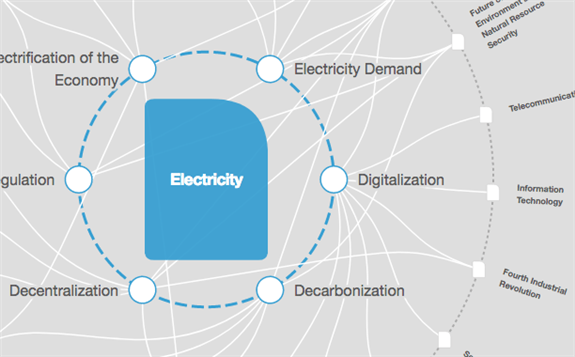 Decarbonizing Electricity Generation
Decarbonizing Electricity Generation
Decarbonizing Electricity Generation is the first and most essential step in the massive transition to clean energy systems needed by 2050 to meet climate goals.
Decarbonizing Electricity Production: Driven by fossil fuels, energy-related greenhouse gas emissions have skyrocketed over the last half-century and now make up more than two-thirds of all emissions. But as a new IAEA data animation underscores, the increasing role of electricity offers an opportunity for its clean sources such as nuclear power to ensure the “deep decarbonization” needed to meet global climate goals.
Using data from the forthcoming IAEA report Climate Change and Nuclear Power 2020, the animation shows emissions from a variety of economic sectors have seen explosive growth, more than doubling since 1970.
It also shows the increasing importance of the power sector as economies electrify. Emissions from electricity production have tripled and now account for almost a quarter of all emissions.
Annual electricity emissions would have been around 2 gigatonnes (Gt) of CO2 higher over the past decade if electricity from lower carbon nuclear power plants had instead been supplied using the average global fossil fuel generation mix.
Energy-related emissions from sectors including electricity, industry, transport and buildings need to be almost fully eliminated by 2050 to meet climate goals under the Paris Agreement. But they have nearly doubled in the last 50 years.
Decarbonizing electricity production through greater use of nuclear power, hydro, wind and solar is only the first step. Clean electricity needs to be extended for use by these other sectors, which currently mostly rely on fossil fuels. Combined with emissions cuts in other sectors, this is what is referred to as deep decarbonization.
“Decarbonizing electricity production is the first and most essential step in the massive transition to clean energy systems needed by 2050 to meet climate goals,” said Henri Paillere, Head of the IAEA’s Planning and Economic Studies Section, which produced the 11th edition of the report that will be released on 16 September, one week before the 64th IAEA General Conference and the annual IAEA Scientific Forum, which this year will discuss Nuclear Power and the Clean Energy Transition.
Some 440 nuclear power reactors operating in 30 countries account for about 10% of global electricity production, or almost 30% of all low carbon electricity. But according to the Intergovernmental Panel on Climate Change (IPCC), nuclear electricity generation has an increasing role to play in shifting away from greenhouse gas-emitting sources and limiting global warming to 1.5°C above pre-industrial levels, consistent with the Paris Agreement. The forthcoming IAEA report explores the IPCC’s four illustrative model pathways that are compatible with the 1.5°C ambition, each of which sees an increase in nuclear power generation by 2050. Taken together, the average of the four envisaged increases is roughly triple the current level of nuclear power.
Nuclear power can also play a role beyond electricity generation. It can also be used to produce hydrogen, which is increasingly seen as a key future fuel option for the transport sector, where emissions have tripled since 1970. Furthermore, hydrogen from nuclear can be used for energy storage and to support industrial processes such as steel and ammonia production.
Fifty-four nuclear power reactors are currently under construction worldwide, for a total net installed capacity of more than 57 000 MW(e). Nine of those reactors are in countries that are adding nuclear power to their energy mix, demonstrating how these nuclear newcomers will play an important role in the clean energy transition.